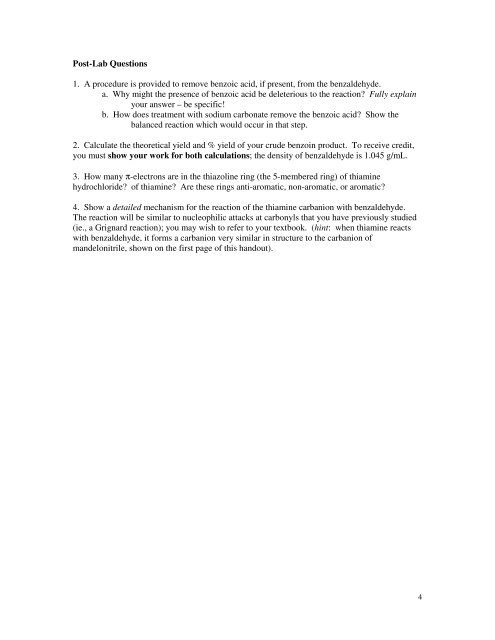The Benzoin Condensation
The Benzoin Condensation
The Benzoin Condensation
You also want an ePaper? Increase the reach of your titles
YUMPU automatically turns print PDFs into web optimized ePapers that Google loves.
Post-Lab Questions<br />
1. A procedure is provided to remove benzoic acid, if present, from the benzaldehyde.<br />
a. Why might the presence of benzoic acid be deleterious to the reaction? Fully explain<br />
your answer – be specific!<br />
b. How does treatment with sodium carbonate remove the benzoic acid? Show the<br />
balanced reaction which would occur in that step.<br />
2. Calculate the theoretical yield and % yield of your crude benzoin product. To receive credit,<br />
you must show your work for both calculations; the density of benzaldehyde is 1.045 g/mL.<br />
3. How many π-electrons are in the thiazoline ring (the 5-membered ring) of thiamine<br />
hydrochloride? of thiamine? Are these rings anti-aromatic, non-aromatic, or aromatic?<br />
4. Show a detailed mechanism for the reaction of the thiamine carbanion with benzaldehyde.<br />
<strong>The</strong> reaction will be similar to nucleophilic attacks at carbonyls that you have previously studied<br />
(ie., a Grignard reaction); you may wish to refer to your textbook. (hint: when thiamine reacts<br />
with benzaldehyde, it forms a carbanion very similar in structure to the carbanion of<br />
mandelonitrile, shown on the first page of this handout).<br />
4







